|
시장보고서
상품코드
1619195
반려동물용 의료 시장 규모, 점유율, 성장 분석 : 제품 유형별, 동물 유형별, 최종사용자별, 유통 채널별, 지역별 - 산업 예측(2024-2031년)Companion Animal Healthcare Market Size, Share, Growth Analysis, By Product Type (Pharmaceuticals, Vaccines), By Animal Type (Dogs, Cats), By End User, By Distribution Channel, By Region - Industry Forecast 2024-2031 |
||||||
세계의 반려동물용 의료 시장 규모는 2022년에 216억 달러로 평가되며, 2023년 235억 7,000만 달러에서 2031년에는 473억 달러로 성장하며, 예측 기간 중(2024-2031년) CAGR은 9.1%로 성장할 전망입니다.
원격근무가 급증하면서 외로움과 불안감을 해소하기 위해 반려동물을 키우는 사람들이 늘고 있습니다. 유럽 반려동물 산업 보고서에 따르면 2022년 유럽에서는 약 3억 4,000만 마리의 반려동물이 사육될 것이며, 46%의 가구가 최소 1마리 이상의 반려동물을 키우고 있다고 합니다. 특히 독일에서는 개가 약 1,060만 마리, 고양이가 약 1,520만 마리로 보고되어 고양이 사육률이 높다는 것을 알 수 있습니다. 동시에 반려동물의 건강 문제, 특히 반려견의 암 발병률 증가는 수의학 강화의 필요성을 강조하고 있습니다. 영국 왕립 수의과대학의 2023년 6월 조사에서 영국개 품종의 심각한 암 위험을 강조한 바 있습니다. 2023년 11월 인스파이어 수의학 파트너스(Inspire Veterinary Partners)가 밸리 수의학 서비스(Valley Veterinary Service Inc.)를 인수해 고급 반려동물 의료 시설에 대한 접근성을 강화한 것이 그 증거입니다. 강화한 것이 그 증거입니다.
목차
서론
- 분석 목적
- 시장 범위
- 정의
분석 방법
- 정보 조달
- 2차·1차 데이터 방법
- 시장 규모 예측
- 시장의 상정과 제약
개요
- 시장의 개요와 전망
- 수급 동향 분석
- 부문별 기회 분석
시장 역학과 전망
- 시장 개요
- 시장 규모
- 시장 역학
- 촉진요인과 기회
- 억제요인과 과제
- Porter의 산업 분석과 영향
- 경쟁 기업 간 경쟁 관계
- 대체품의 위협
- 바이어의 교섭력
- 신규 진출업체의 위협
- 공급 기업의 교섭력
시장의 주요 인사이트
- 주요 성공 요인
- 경쟁의 정도
- 주요 투자재원
- 시장 에코시스템
- 시장의 매력 지수(2023년)
- PESTEL 분석
- 거시경제 지표
- 밸류체인 분석
- 가격 분석
- 기술 진보
- 규제 상황
- 특허 분석
- 사례 연구
세계의 반려동물용 의료 시장 규모·CAGR : 제품 유형별(2024-2031년)
- 시장 개요
- 의약품
- 항생제
- 항염증약
- 구충제
- 통증 관리
- 기타
- 백신
- 생약독화 백신
- 불활화 백신
- 재조합 백신
- 기타
- 진단
- 면역진단 검사
- 분자진단
- 진단 영상
- 임상화학
- 기타
- 사료첨가제
- 영양 사료첨가제
- 의약품 사료첨가제
세계의 반려동물용 의료 시장 규모·CAGR : 동물 유형별(2024-2031년)
- 시장 개요
- 개
- 고양이
- 말
- 기타
세계의 반려동물용 의료 시장 규모·CAGR : 최종사용자별(2024-2031년)
- 시장 개요
- 동물병원·클리닉
- 진단 검사실
- 연구기관
- 재택 의료
세계의 반려동물용 의료 시장 규모·CAGR : 유통 채널별(2024-2031년)
- 시장 개요
- 병원 약국
- 소매 약국
- 온라인 약국
세계의 반려동물용 의료 시장 규모·CAGR(2024-2031년)
- 북미
- 미국
- 캐나다
- 유럽
- 영국
- 독일
- 스페인
- 프랑스
- 이탈리아
- 기타 유럽 지역
- 아시아태평양
- 중국
- 인도
- 일본
- 한국
- 기타 아시아태평양
- 라틴아메리카
- 브라질
- 기타 라틴아메리카 지역
- 중동 및 아프리카
- GCC 국가
- 남아프리카공화국
- 기타 중동 및 아프리카
경쟁 구도
- 상위 5사의 비교
- 주요 기업의 시장 포지셔닝(2023년)
- 주요 기업이 채택한 전략
- 시장의 최근 동향
- 주요 기업의 시장 점유율(2023년)
- 주요 기업의 개요
- 기업 개요
- 제품 포트폴리오 분석
- 부문별 점유율 분석
- 매출의 전년대비 비교(2021-2023년)
주요 기업 개요
- Zoetis Inc.
- Merck & Co., Inc.
- Boehringer Ingelheim International GmbH
- Elanco Animal Health Incorporated
- Bayer AG
- Ceva Sante Animale
- Virbac
- Vetoquinol S.A.
- Heska Corporation
- IDEXX Laboratories, Inc.
- Dechra Pharmaceuticals PLC
- Phibro Animal Health Corporation
- Ourofino Saude Animal
- Neogen Corporation
- Ceva Animal Health LLC
결론과 권장사항
KSA 25.01.13Global Companion Animal Healthcare Market size was valued at USD 21.60 billion in 2022 and is poised to grow from USD 23.57 billion in 2023 to USD 47.30 billion by 2031, growing at a CAGR of 9.1% during the forecast period (2024-2031).
The surge in remote work has catalyzed pet adoption, as individuals seek companionship to alleviate feelings of isolation and anxiety. According to the European Pet Food Industry report, Europe housed approximately 340 million companion animals in 2022, with 46% of households owning at least one pet. Notably, Germany reported around 10.6 million dogs and 15.2 million cats, indicating a higher adoption rate for cats. Concurrently, the rise in pet health concerns, particularly the increasing incidence of cancer in dogs, underscores the need for enhanced veterinary care. The Royal Veterinary College's June 2023 study highlighted significant cancer risks in UK dog breeds. To capitalize on the growing demand for pet care, companies are expanding their market presence, as evidenced by Inspire Veterinary Partners' acquisition of Valley Veterinary Service Inc. in November 2023, enhancing access to advanced pet healthcare facilities.
Top-down and bottom-up approaches were used to estimate and validate the size of the Global Companion Animal Healthcare market and to estimate the size of various other dependent submarkets. The research methodology used to estimate the market size includes the following details: The key players in the market were identified through secondary research, and their market shares in the respective regions were determined through primary and secondary research. This entire procedure includes the study of the annual and financial reports of the top market players and extensive interviews for key insights from industry leaders such as CEOs, VPs, directors, and marketing executives. All percentage shares split, and breakdowns were determined using secondary sources and verified through Primary sources. All possible parameters that affect the markets covered in this research study have been accounted for, viewed in extensive detail, verified through primary research, and analyzed to get the final quantitative and qualitative data.
Global Companion Animal Healthcare Market Segmental Analysis
Global Companion Animal Healthcare Market is segmented by product type, animal type, end user, distribution channel and region. Based on product type, the market is segmented into pharmaceuticals (antibiotics, anti-inflammatory drugs, parasiticides, pain management, others), vaccines (live attenuated vaccines, inactivated vaccines, recombinant vaccines, others), diagnostics (immunodiagnostic tests, molecular diagnostics, diagnostic imaging, clinical chemistry, others) and feed additives (nutritional feed additives, medicinal feed additives). Based on animal type, the market is segmented into dogs, cats, horses and other. Based on end user, the market is segmented into veterinary hospitals & clinics, diagnostic laboratories, research institutes and home care settings. Based on distribution channel, the market is segmented into Hospital Pharmacies, retail pharmacies and online pharmacies. Based on region, the market is segmented into North America, Europe, Asia Pacific, Latin America and Middle East & Africa.
Driver of the Global Companion Animal Healthcare Market
The global companion animal healthcare market is significantly driven by the rising trend of pet ownership worldwide. As more individuals embrace pets as companions, there is a corresponding surge in the demand for various health services, including veterinary care, vaccinations, and wellness products tailored for animals. This growth in pet ownership can be attributed to several factors, such as urban living conditions, evolving lifestyles, and heightened awareness of the numerous benefits associated with having pets. Ultimately, as more people bring pets into their homes, the need for comprehensive healthcare solutions for these animals continues to expand, fueling market growth.
Restraints in the Global Companion Animal Healthcare Market
One of the significant constraints in the Global Companion Animal Healthcare market is the rising cost of veterinary care. The expense associated with advanced treatments and procedures can be prohibitively high, impeding pet owners from accessing the full spectrum of healthcare options for their animals. This financial hurdle disproportionately affects low- and moderate-income pet owners, who may struggle to provide necessary medical care for their pets. As a result, the lack of affordability can lead to an inadequate healthcare experience, failing to meet the comprehensive needs of companion animals and limiting their overall health and well-being.
Market Trends of the Global Companion Animal Healthcare Market
The Global Companion Animal Healthcare market is witnessing a notable trend towards the increasing adoption of pet insurance, driven by a growing awareness among pet owners about the financial benefits of such coverage. As veterinary costs continue to rise, pet insurance provides a viable solution for managing expenses related to medical, surgical, and preventative care, alleviating financial stress for pet owners. This shift is further fueled by a heightened emphasis on the well-being of pets, prompting owners to seek comprehensive healthcare solutions. Consequently, this surge in pet insurance adoption is expected to significantly contribute to market growth and shape future healthcare strategies for companion animals.
Table of Contents
Introduction
- Objectives of the Study
- Scope of the Report
- Definitions
Research Methodology
- Information Procurement
- Secondary & Primary Data Methods
- Market Size Estimation
- Market Assumptions & Limitations
Executive Summary
- Global Market Outlook
- Supply & Demand Trend Analysis
- Segmental Opportunity Analysis
Market Dynamics & Outlook
- Market Overview
- Market Size
- Market Dynamics
- Driver & Opportunities
- Restraints & Challenges
- Porters Analysis & Impact
- Competitive rivalry
- Threat of substitute
- Bargaining power of buyers
- Threat of new entrants
- Bargaining power of suppliers
Key Market Insights
- Key Success Factors
- Degree of Competition
- Top Investment Pockets
- Market Ecosystem
- Market Attractiveness Index, 2023
- PESTEL Analysis
- Macro-Economic Indicators
- Value Chain Analysis
- Pricing Analysis
- Regulatory Landscape
- Patent Analysis
- Case Studies
Global Companion Animal Healthcare Market Size by Product Type & CAGR (2024-2031)
- Market Overview
- Pharmaceuticals
- Antibiotics
- Anti-inflammatory Drugs
- Parasiticides
- Pain Management
- Others
- Vaccines
- Live Attenuated Vaccines
- Inactivated Vaccines
- Recombinant Vaccines
- Others
- Diagnostics
- Immunodiagnostic Tests
- Molecular Diagnostics
- Diagnostic Imaging
- Clinical Chemistry
- Others
- Feed Additives
- Nutritional Feed Additives
- Medicinal Feed Additives
Global Companion Animal Healthcare Market Size by Animal Type & CAGR (2024-2031)
- Market Overview
- Dogs
- Cats
- Horses
- Other
Global Companion Animal Healthcare Market Size by End User & CAGR (2024-2031)
- Market Overview
- Veterinary Hospitals & Clinics
- Diagnostic Laboratories
- Research Institutes
- Home Care Settings
Global Companion Animal Healthcare Market Size by Distribution Channel & CAGR (2024-2031)
- Market Overview
- Hospital Pharmacies
- Retail Pharmacies
- Online Pharmacies
Global Companion Animal Healthcare Market Size & CAGR (2024-2031)
- North America (Product Type, Animal Type, End User, Distribution Channel, Distribution Channel)
- US
- Canada
- Europe (Product Type, Animal Type, End User, Distribution Channel)
- UK
- Germany
- Spain
- France
- Italy
- Rest of Europe
- Asia-Pacific (Product Type, Animal Type, End User, Distribution Channel)
- China
- India
- Japan
- South Korea
- Rest of Asia Pacific
- Latin America (Product Type, Animal Type, End User, Distribution Channel)
- Brazil
- Rest of Latin America
- Middle East & Africa (Product Type, Animal Type, End User, Distribution Channel)
- GCC Countries
- South Africa
- Rest of Middle East & Africa
Competitive Intelligence
- Top 5 Player Comparison
- Market Positioning of Key Players, 2023
- Strategies Adopted by Key Market Players
- Recent Developments in the Market
- Company Market Share Analysis, 2023
- Company Profiles of All Key Players
- Company Details
- Product Portfolio Analysis
- Company's Segmental Share Analysis
- Revenue Y-O-Y Comparison (2021-2023)
Key Company Profiles
- Zoetis Inc.
- Company Overview
- Business Segment Overview
- Financial Updates
- Key Developments
- Merck & Co., Inc.
- Company Overview
- Business Segment Overview
- Financial Updates
- Key Developments
- Boehringer Ingelheim International GmbH
- Company Overview
- Business Segment Overview
- Financial Updates
- Key Developments
- Elanco Animal Health Incorporated
- Company Overview
- Business Segment Overview
- Financial Updates
- Key Developments
- Bayer AG
- Company Overview
- Business Segment Overview
- Financial Updates
- Key Developments
- Ceva Sante Animale
- Company Overview
- Business Segment Overview
- Financial Updates
- Key Developments
- Virbac
- Company Overview
- Business Segment Overview
- Financial Updates
- Key Developments
- Vetoquinol S.A.
- Company Overview
- Business Segment Overview
- Financial Updates
- Key Developments
- Heska Corporation
- Company Overview
- Business Segment Overview
- Financial Updates
- Key Developments
- IDEXX Laboratories, Inc.
- Company Overview
- Business Segment Overview
- Financial Updates
- Key Developments
- Dechra Pharmaceuticals PLC
- Company Overview
- Business Segment Overview
- Financial Updates
- Key Developments
- Phibro Animal Health Corporation
- Company Overview
- Business Segment Overview
- Financial Updates
- Key Developments
- Ourofino Saude Animal
- Company Overview
- Business Segment Overview
- Financial Updates
- Key Developments
- Neogen Corporation
- Company Overview
- Business Segment Overview
- Financial Updates
- Key Developments
- Ceva Animal Health LLC
- Company Overview
- Business Segment Overview
- Financial Updates
- Key Developments



















